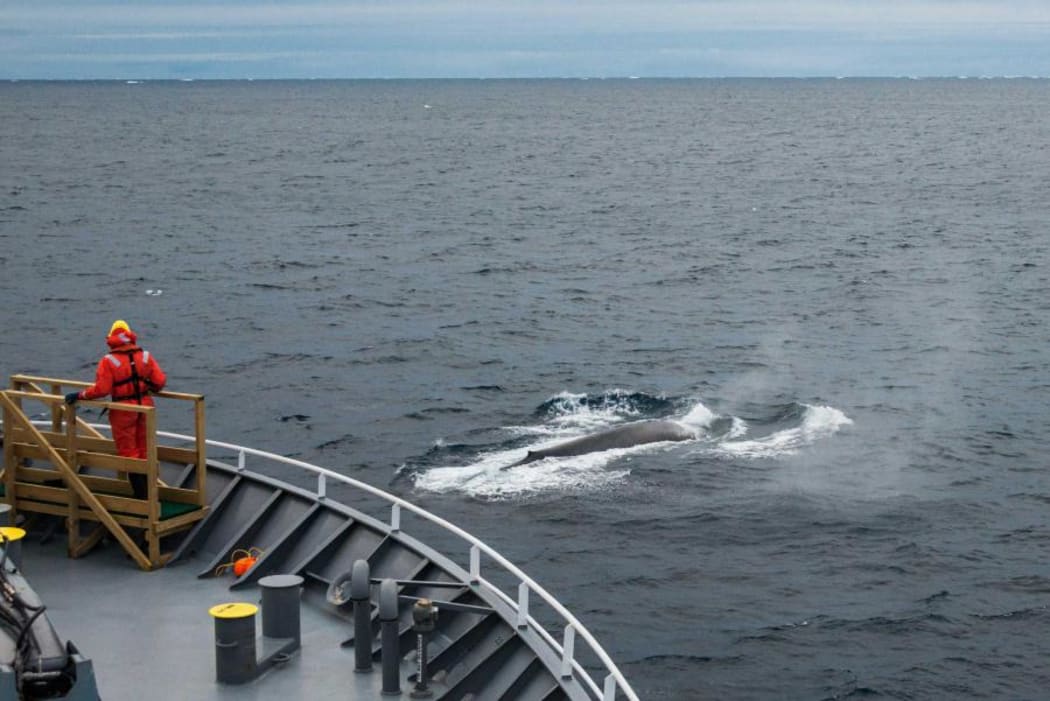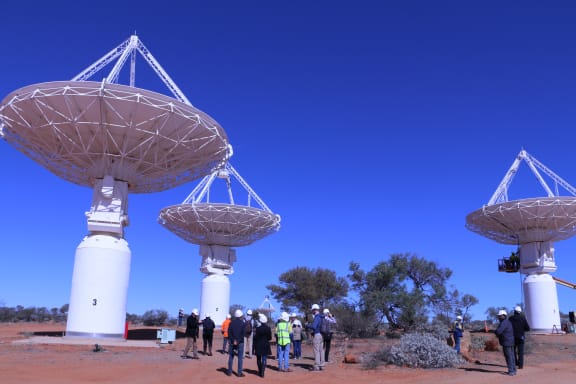
Blue whale sighted in the Southern Ocean. Photo: Dave Allen, NIWA
From blue whales in Antarctica to ninja viruses in your compost heap, from gravitational waves that trace an ancient black hole collision to lasers that hit with the precision of atoms, from mitochondria in your brain to nano-sized drug-delivery agents in your blood stream, from new chemical elements to the geological signature that marks our impact on Earth ... I've had the privilege of telling hundreds of stories about science and the environment during my time with RNZ.

The Australian Square Kilometre Array Pathfinder, or ASKAP, with its 36 dishes, is a precursor to the gigantic SKA telescope. Photo: Veronika Meduna
But Our Changing World is changing and that means that I'll have to say good bye - so this week I look back at some of my stories from Our Changing World and its predecessors Eureka and Environment Matters.
It's impossible to choose favourites, so I might as well start with one of the last features I recorded for Our Changing World during a recent trip to the Australian outback to visit the site of one of the largest science projects New Zealand is involved in – the Square Kilometre Array.
The Universe is certainly one of the frontiers of science, but for me personally, the deep ocean holds as much mystery. Here’s a programme about the Ring of Fire expedition, during which marine scientists used a manned submersible to explore a 2500km chain of black smokers, or undersea volcanoes, in one of the world’s strangest underwater landscapes, just off the New Zealand coast. Just imagine squeezing into a tiny capsule with two other people to dive, slowly, 2000 metres deep.
Science stories are always about people, and one of my most memorable interviews was with James Lovelock, an independent scientists perhaps best known for the Gaia hypothesis, which sees our planet as a self-regulating system. He featured in one of my Eureka programmes, almost 15 years ago.
If you listen to the story above, you'll hear us talking about the early days of climate research, and of course, climate change, and our role in it, has been an ongoing theme for me. There are too many stories to list, so for those of you who want to catch up on some of the most recent ones, here's a compilation.

Lunch spot in a dinosaur forest: GNS Science palaeontologists John Simes and James Crampton and Forest Lifeforce Restoration Trust land manager Pete Shaw take a break from the hard work involved in hunting for fossil bones. Photo: RNZ / Veronika Meduna
You can’t have a science programme without dinosaurs and one of my regrets has always been that I’ve never managed to go dinosaur fossil hunting with Joan Wiffen. Here I got a chance to at least visit her stomping ground.
These are just a handful of examples, but after more than a decade of science storytelling for RNZ, I'm yet to meet a scientist who matches the white-coated, passionless stereotype. New Zealand's science community is a fantastic bunch of people to work with, as are my colleagues at RNZ. Huge thanks to all - and to YOU for tuning in and reading our stories.

